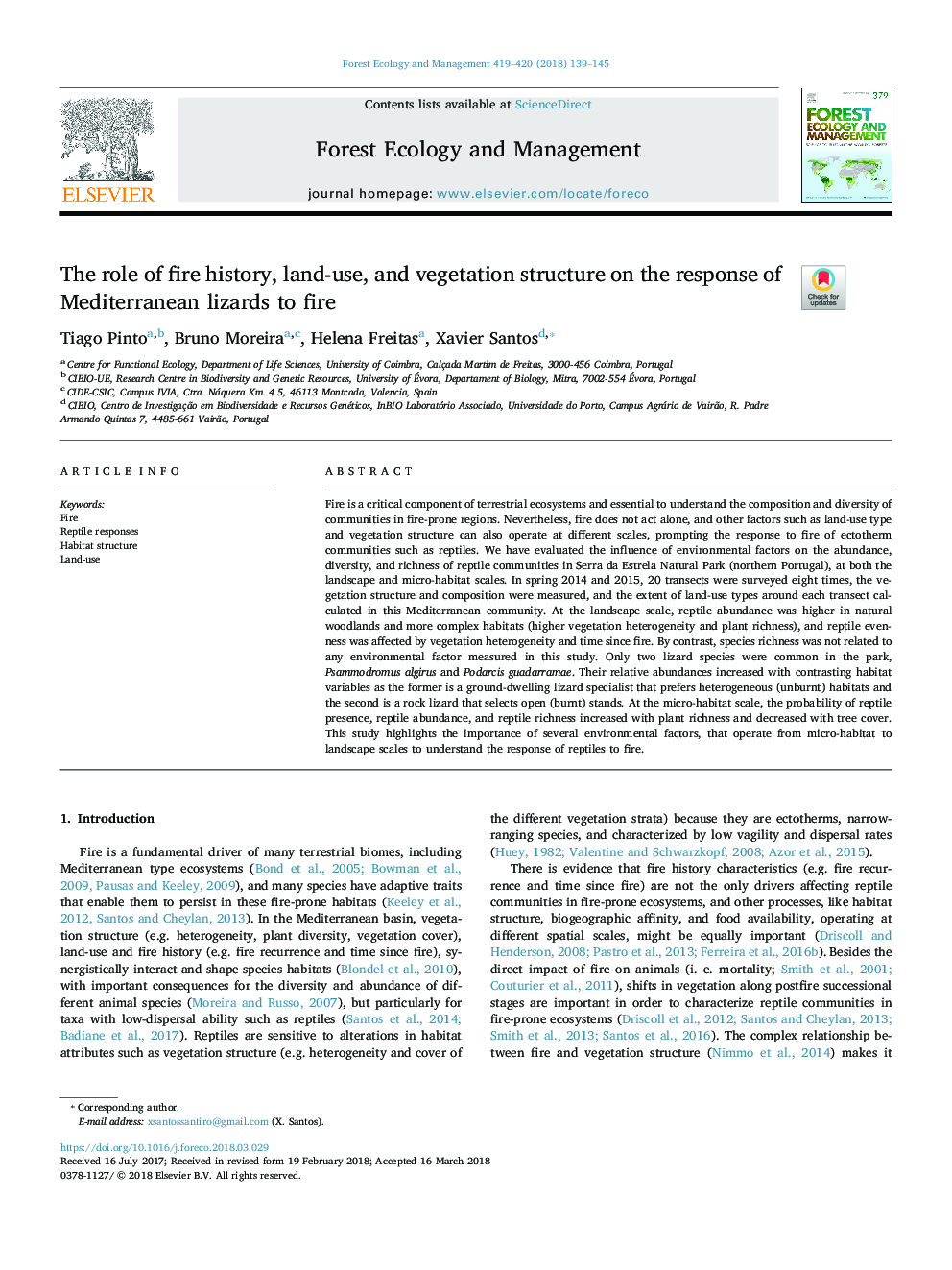| کد مقاله | کد نشریه | سال انتشار | مقاله انگلیسی | نسخه تمام متن |
|---|---|---|---|---|
| 6541712 | 1421340 | 2018 | 7 صفحه PDF | دانلود رایگان |
عنوان انگلیسی مقاله ISI
The role of fire history, land-use, and vegetation structure on the response of Mediterranean lizards to fire
ترجمه فارسی عنوان
نقش تاریخ آتش سوزی، استفاده از زمین و ساختار گیاهی در پاسخ واژگونان دریایی مدیترانه به آتش سوزی
دانلود مقاله + سفارش ترجمه
دانلود مقاله ISI انگلیسی
رایگان برای ایرانیان
کلمات کلیدی
آتش، پاسخ های خزنده، ساختار محل زندگی، استفاده از زمین،
موضوعات مرتبط
علوم زیستی و بیوفناوری
علوم کشاورزی و بیولوژیک
بوم شناسی، تکامل، رفتار و سامانه شناسی
چکیده انگلیسی
Fire is a critical component of terrestrial ecosystems and essential to understand the composition and diversity of communities in fire-prone regions. Nevertheless, fire does not act alone, and other factors such as land-use type and vegetation structure can also operate at different scales, prompting the response to fire of ectotherm communities such as reptiles. We have evaluated the influence of environmental factors on the abundance, diversity, and richness of reptile communities in Serra da Estrela Natural Park (northern Portugal), at both the landscape and micro-habitat scales. In spring 2014 and 2015, 20 transects were surveyed eight times, the vegetation structure and composition were measured, and the extent of land-use types around each transect calculated in this Mediterranean community. At the landscape scale, reptile abundance was higher in natural woodlands and more complex habitats (higher vegetation heterogeneity and plant richness), and reptile evenness was affected by vegetation heterogeneity and time since fire. By contrast, species richness was not related to any environmental factor measured in this study. Only two lizard species were common in the park, Psammodromus algirus and Podarcis guadarramae. Their relative abundances increased with contrasting habitat variables as the former is a ground-dwelling lizard specialist that prefers heterogeneous (unburnt) habitats and the second is a rock lizard that selects open (burnt) stands. At the micro-habitat scale, the probability of reptile presence, reptile abundance, and reptile richness increased with plant richness and decreased with tree cover. This study highlights the importance of several environmental factors, that operate from micro-habitat to landscape scales to understand the response of reptiles to fire.
ناشر
Database: Elsevier - ScienceDirect (ساینس دایرکت)
Journal: Forest Ecology and Management - Volumes 419â420, 1 July 2018, Pages 139-145
Journal: Forest Ecology and Management - Volumes 419â420, 1 July 2018, Pages 139-145
نویسندگان
Tiago Pinto, Bruno Moreira, Helena Freitas, Xavier Santos,
